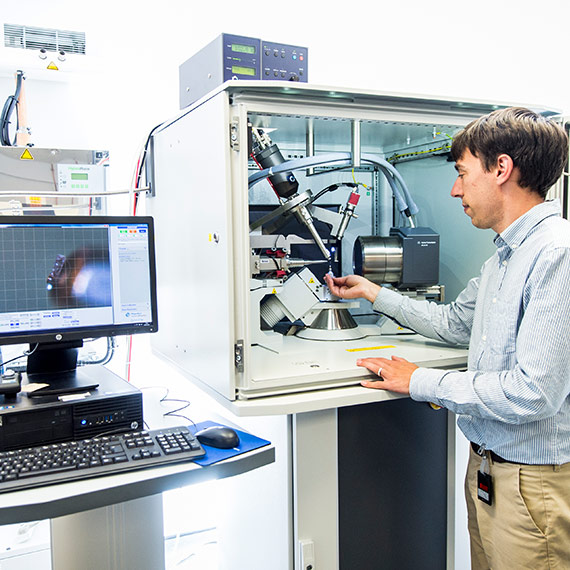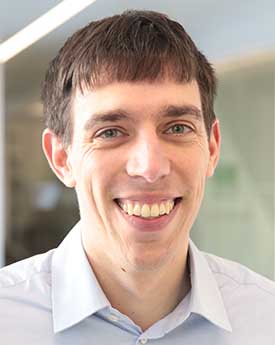The X-ray facility is run by Dr Nathan Halcovitch, who would be happy to discuss your experimental needs. All the instrumentation is currently located in A67 and A68, Faraday Building.


Single crystal and powder XRD - Agilent SuperNova
This diffractometer features a 4-circle Kappa precision goniometer, an Atlas S2 135 mm CCD Area Detector with an intelligent measurement system, and both a copper and a molybdenum microfocus X-ray source.
A colour video microscope (120× magnification) is equipped, as is a "Sample Temperature Attachment" (80–400 K) from Oxford Cryosystems. Automatic structure solution and refinement is possible from AutoChem, concurrent with data collection and integration with CrysAlisPro software.
Capabilities
- Single crystal X-ray diffraction – small molecules, proteins, mineral structures
- Powder diffraction – molecular ‘fingerprint’ of solids, can differentiate between phases
- Variable temperature analyses
Powder XRD - Rigaku SmartLab
This diffractometer features a 9 kW Cu-source generator and is equipped with a high-resolution Vertical θ/θ 4-Circle Goniometer and D/teX-ULTRA 250 High-Speed Position-Sensitive Detector System. It can operate in either reflection or transmission mode and has an ASC6-SL 6 position automated sample changer.
Software
PDXL Basic Package
- Software for XRD analysis
PDXL Quantitative
- Quantitative analyses using calibration curves.
- An internal standard, external standard and standard addition methods
- Simultaneous automatic analysis of multiple samples
Global Fit XRR
- X-ray reflectivity analysis software
Capabilities
- PXRD data for many types of samples: thin films, powders, fibres, wafers
- Potential for structure solution from PXRD data
- Determining crystallite size for polycrystalline films and materials
- Determining the percentage of material in crystalline form versus amorphous
- X-ray reflectivity (for the determination of thickness, interface roughness, and density of thin films and multilayers)
EDXRF - Shimadzu EDX 8000
The EDXRF spectrometer is a newly designed instrument incorporating a highly sensitive SSD detector and combinations of optimised optics and primary filters to achieve high levels of sensitivity across the entire range from light (C) to heavy (U) elements.
The system enables the automatic selection of four collimator settings (1, 3, 5, and 10 mm) with the view displayed using an inbuilt camera and highlighting software. The instrument can accommodate various sample sizes from 1 mm up to 32 mm, and a turret for 12 samples is available to increase throughput.
Fundamental Parameters software for quantitative elemental analysis is included and offers the ability to utilise theoretical intensity calculations to quantitatively analyse unknown samples. This allows for quantitative analysis even when it is difficult to obtain matrix-matched reference standards.
Capabilities
- Qualitative elemental analysis (elements C through to U)
- Quantitative elemental analysis (elements Na through to U; elements C to Na are more difficult and require analysis under vacuum)
- Can analyse both solids & liquids
- "Mapping analysis" of an area of solid samples
Contact
Dr Nathan Halcovitch
Experimental Officer in X-ray TechniquesEnergy Lancaster


